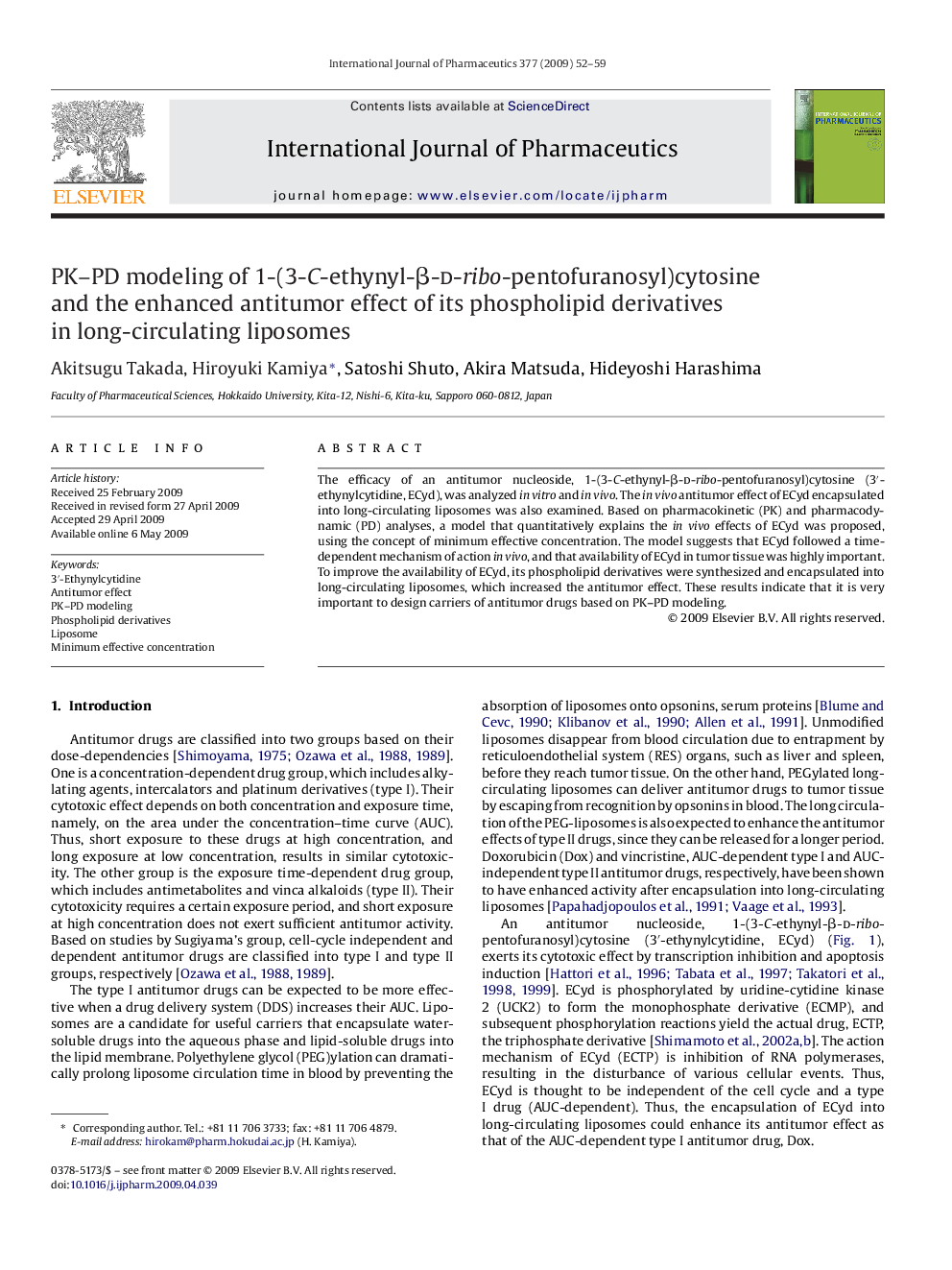| Article ID | Journal | Published Year | Pages | File Type |
|---|---|---|---|---|
| 2504781 | International Journal of Pharmaceutics | 2009 | 8 Pages |
The efficacy of an antitumor nucleoside, 1-(3-C-ethynyl-β-d-ribo-pentofuranosyl)cytosine (3′-ethynylcytidine, ECyd), was analyzed in vitro and in vivo. The in vivo antitumor effect of ECyd encapsulated into long-circulating liposomes was also examined. Based on pharmacokinetic (PK) and pharmacodynamic (PD) analyses, a model that quantitatively explains the in vivo effects of ECyd was proposed, using the concept of minimum effective concentration. The model suggests that ECyd followed a time-dependent mechanism of action in vivo, and that availability of ECyd in tumor tissue was highly important. To improve the availability of ECyd, its phospholipid derivatives were synthesized and encapsulated into long-circulating liposomes, which increased the antitumor effect. These results indicate that it is very important to design carriers of antitumor drugs based on PK–PD modeling.
